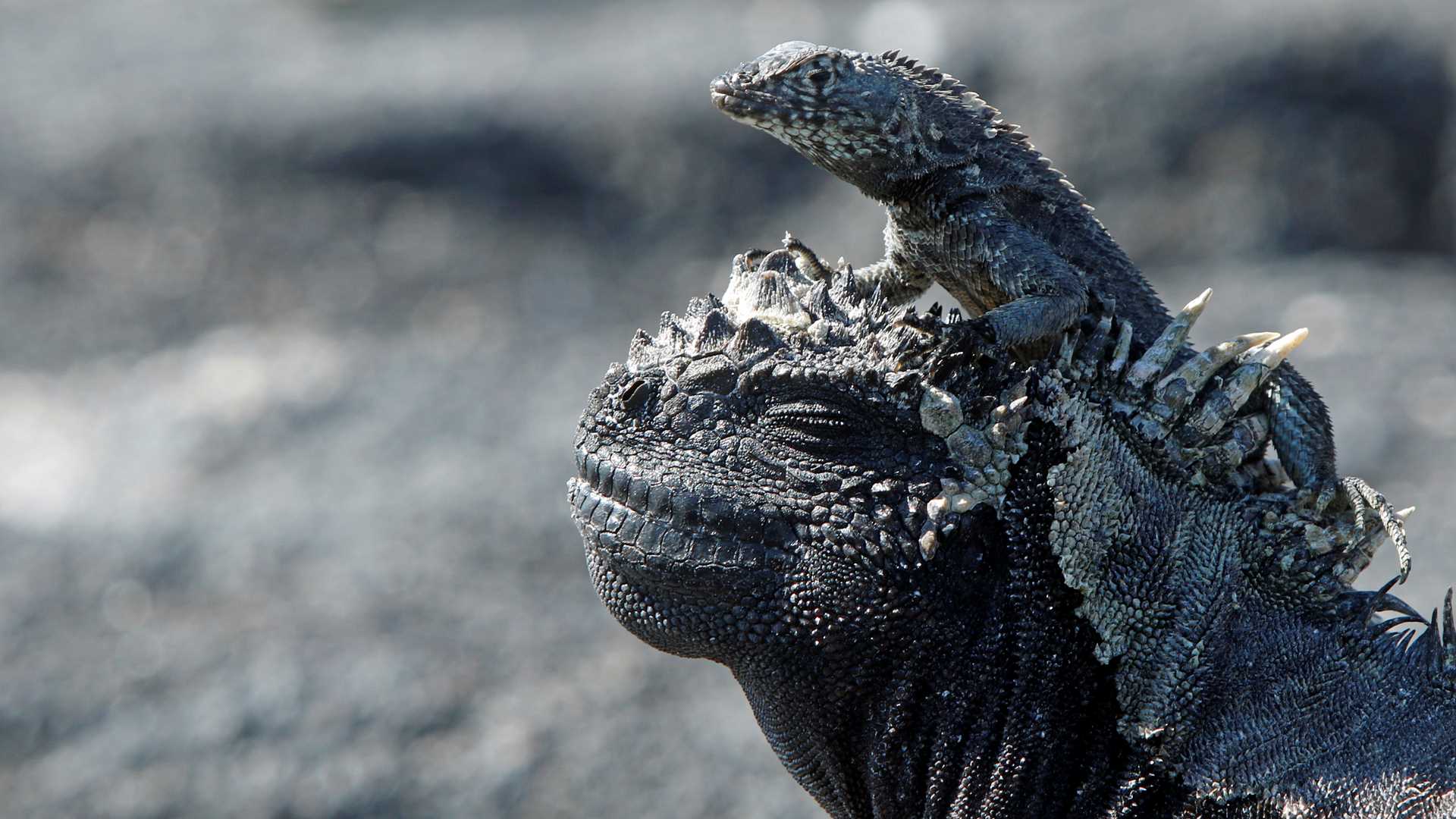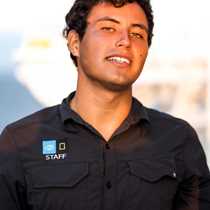After visiting the central part of the archipelago, we sailed west to Fernandina and Isabela, the youngest islands. Fernandina and Isabela received their names in honor of Fernando de Aragon and Isabel de Castilla, king and queen of Spain in the late 1490s. After a long navigation from Rabida, we started our day early by exploring the calm seas west of Isabela in search of marine life. Heading south, the dramatic landscape looked imposed. The gigantic Ecuador Volcano with its huge lava flows is a witness of the island’s explosive geologic past.
After breakfast, we boarded Zodiacs to visit Punta Espinoza on Fernandina Island. Home to many endemic species and one of the most active volcanoes in the world, Volcan La Cumbre, Punta Espinoza is one of the most spectacular sites in the Galapagos. The small landing dock looked flooded due to the high tide. As we walked along the lava field, hundreds of large marine iguanas welcomed us to the most preserved island in the enchanted archipelago. We observed the endemic reptiles everywhere. They covered large areas of the path. As the iguanas basked under the sun, they secreted salt out of their nostrils, producing an unmistakable noise heard throughout our visit. Then, we arrived to flightless cormorant territory. We observed many of the birds making nests, collecting seaweed, or drying out their stumpy wings. Two Galapagos hawks observed the iguanas attentively, as if selecting the best prey. Little by little, the sun warmed up the environment and some of the iguanas headed to the ocean to feed. On the beach, Galapagos sea lions rested indifferently. At 11:00 a.m., we returned to Fernandina Island to discover the incredible underwater world with its unique flora and fauna. We encountered flightless cormorants, sea lions, and colorful tropical fish. Some of the fish swam near sea turtles, cleaning their bodies as they removed and ate some parasites.
During lunchtime, National Geographic Islander sailed west towards Bolivar Channel to Punta Vicente Roca on Isabel Island. After a Human History talk, we boarded Zodiacs and heading to the shore. We spotted flightless cormorants nesting along the coast, green sea turtles, fur seals, and Galapagos sea lions. The richness of the ocean and the stunning geological features, including titanic cliffs and evidence of great eruptions, all helped us understand how the archipelago formed millions of years ago.
We returned aboard to start sailing north. We celebrated as we crossed the equator with a party and a wine tasting. To commemorate this change in hemisphere, we did the limbo underneath the string of an Ecuadorian flag. In the west, the sunset was a great ending to this magical day in the Galapagos.







